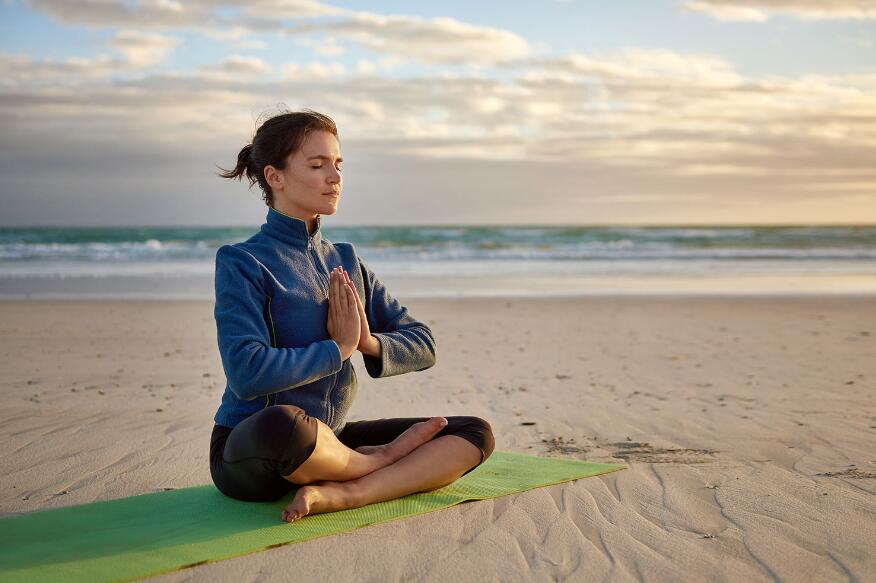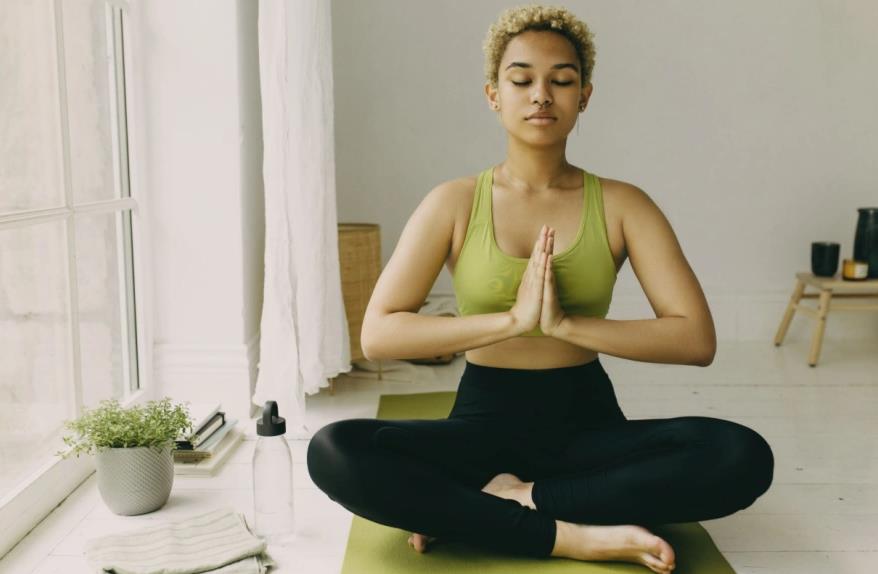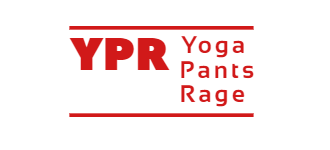Breathing is the key to unlocking the full potential of your mind, body, and spirit. As a beginner, understanding and integrating proper yoga breathing techniques into your practice is crucial for maximizing the benefits of yoga.
In this blog, we will explore various yoga breathing techniques, their benefits, and how you can incorporate them into your daily practice Let’s dive into the world of yoga breathwork and discover the power of conscious breathing.
The Importance of Breath in Yoga – Why Does It Matter?

Breath, or prana in Sanskrit, is the vital life force that sustains us. In the of yoga, breath is the bridge between our physical and mental realms helping us to create balance, focus, and emotional clarity.
Controlling our breath can influence our emotional state, improve physical performance, and enhance overall well-being.
In yoga, the breath serves as an anchor, helping us stay present and connected to our bodies as we move various post. generate energy, release and bring awareness to the present moment – all components of a fulfilling yoga practice.
The Connection between Breath and Mindfulness
As you continue exploring and practicing various yoga breathing techniques, you may notice a deeper connection between your breath and your mindfulness.
By focusing on your breath during your practice, you can develop a heightened sense of self-awareness, mental clarity, and emotional balance.
Here are some tips for cultivating mindfulness through your breath:
- Observe without judgment: As you practice yoga breathing techniques, simply observe any thoughts, feelings, or sensations that arise without judgment or attachment. This helps to foster an attitude of non-reactivity and acceptance.
- Return to your breath: Whenever your mind begins to wander, gently guide your focus back to your breath. This acts as an anchor, helping you stay present and grounded in the moment.
- Embrace impermanence: Recognize that your breath, like your thoughts emotions, is. By embracing the impermanence of your breath, you can cultivate a greater sense of presence and adaptability in your daily life.
Incorporating these mindfulness practices into your yoga breathing can deepen your connection to your breath, enhance your overall well-being, and create a more fulfilling yoga experience.
Types of Yoga Breathing Techniques You Can Try
There are numerous yoga techniques, each with its unique purpose and benefits. Here are five essential techniques to help you get started:
1. Natural Breathing (Sahaja Pranayama)
- Find a comfortable seated position, either cross-legged on the floor or your feet flat on the ground.
- Close your eyes and bring awareness to your breath without trying to change it.
- Observe the natural rhythm, depth, and pace of your inhalations and exhalations.
- Notice any sensations in your body as you breathe, such as the rise and fall of your chest or the air entering and exiting your nostrils.
- Practice this technique for 5-10 minutes daily to cultivate mindfulness and relaxation.
2. Diaphragmatic Breathing (Belly Breathing)
- Begin in a comfortable seated or lying down position.
- Place one hand on your chest and the other on your abdomen below your ribcage.
- Inhale slowly and deeply through your nose, allowing your abdomen to rise while keeping your chest still.
- Exhale slowly through your nose or mouth, letting your abdomen fall.
- Continue this pattern for 5-10 minutes, focusing on engaging your diaphragm and expanding your belly with each breath.
3. Ujjayi Breathing (Ocean Breath)
- Start in a comfortable seated position with your spine straight and shoulders relaxed.
- Inhale deeply through your nose, filling your lungs.
- Slightly constrict the back of your throat (as if you were fogging up a mirror) and exhale through your nose, creating a soft ocean-like sound.
- Maintain the constriction in your throat as you inhale through your nose, again creating the sound.
- Practice this technique for several minutes, focusing on the sound and rhythm of your breath.
4. Alternate Nostril Breathing (Nadi Shodhana Pranayama)
- Sit comfortably with your spine straight and shoulders relaxed.
- Fold your index and middle fingers towards your palm using your right hand, leaving your thumb, ring, and pinky fingers extended.
- Close your right nostril with your thumb and inhale slowly through your left nostril.
- Close your left nostril with your ring or pinky finger, release your thumb from your right nostril, and exhale slowly through your right nostril.
- Inhale through your right nostril, close it with your thumb, release your ring or pinky finger from your left nostril, and exhale through your left nostril.
- Continue this pattern for 5-10 minutes, alternating nostrils with each inhalation and exhalation.
5. Skull Shining Breath (Kapalabhati Pranayama)
- Begin in a comfortable seated position with your spine straight and shoulders relaxed.
- Take a deep breath in through your nose and exhale forcefully, contracting your abdominal muscles to push air out of your lungs.
- Allow your inhalation to happen passively as your abdominal muscles relax and your lungs naturally fill with air.
- Maintain a steady rhythm, focusing on forceful exhalations followed by passive inhalations.
- Practice this technique for 1-2 minutes, gradually increasing the duration as you become more comfortable with the practice.
Remember to always listen to your body and these techniques at a pace that feels comfortable for you. As you progress, you’ll likely notice improvements in your overall breath control and awareness during your yoga practice.
Breathing Techniques for Stress Relief and Relaxation

Another vital aspect of yoga breathing is its ability to promote stress relief and relaxation. Here are three additional techniques to help you manage stress and find calm during your yoga practice or daily life:
1. Equal Breathing (Sama Vritti Pranayama)
- Close your eyes and focus on your natural breath in a comfortable seated position.
- Gradually adjust your inhalations and exhalations to equal length, counting to four or six as you inhale and the same count as you exhale.
- This technique helps to calm the mind, reduce anxiety, and create a sense of balance.
2. Extended Exhale Breathing
- Begin comfortably seated or lying down, focusing on your natural breath.
- Slowly lengthen your exhalations, making them twice as long as your inhalations (e.g., inhale for four counts and exhale for eight counts).
- This technique helps to activate the parasympathetic nervous system, inducing relaxation and stress relief.
3. Three-Part Breath (Dirga Pranayama)
- Find a comfortable seated or lying down position, placing one hand on your chest and the other on your abdomen.
- Inhale deeply, filling your abdomen, ribcage, and upper chest with air sequentially.
- Exhale slowly, releasing the air from your upper chest, ribcage, and abdomen.
- This technique helps to promote deep relaxation, reduce stress, and increase lung capacity.
Am I breathing too fast or too slow?
Your breath should generally be slow, steady, and controlled during yoga. However, the pace may vary depending on the intensity of the poses or the specific breathing techniques being used. Focus on maintaining a comfortable rhythm that allows you to fully inhale and exhale without feeling strained or out of breath.
Should I breathe through my nose or my mouth?
In most yoga practices, breathing through your nose is recommended as it helps filter the air, regulate the breath, and create a sense of calmness. However, there may be where breathing through the mouth is necessary, such as during vigorous exercise or if you have nasal congestion. Always listen to your body and do what feels most comfortable for you.
How do I know if I’m engaging my diaphragm correctly?
When you engage your diaphragm during breathing, your abdomen should expand and contract as you exhale. To check if you’re engaging your diaphragm correctly, place one hand on your chest and the other on your abdomen while breathing. Your abdomen should rise and fall more than your chest, indicating your use of your diaphragm effectively.
I tend to hold my breath during challenging poses. Is that normal?
It’s common for beginners to hold their breath during more challenging poses unintentionally, but doing so can benefits of your practice. Make a conscious effort to maintain a steady breath during all poses, even when you feel challenged or uncomfortable. This will help to reduce tension, increase focus, and improve your overall yoga experience.
How do I coordinate my breath with my movements?”
In yoga, it’s important to synchronize your breath with your movements to create a seamless and harmonious flow. Typically, you’ll inhale as you expand, lift or lengthen your body (e.g., raising your arms or extending your leg) and exhale as you contract, fold or twist your body (e.g., bending forward or moving into a twist). With practice, this coordination will become more natural and intuitive.
Remember that mastering proper breathing in yoga takes time and practice. Be patient with yourself as you develop your breath awareness and control. If you’re ever unsure about your breathing during practice, don’t hesitate to ask your yoga instructor for guidance and feedback.
